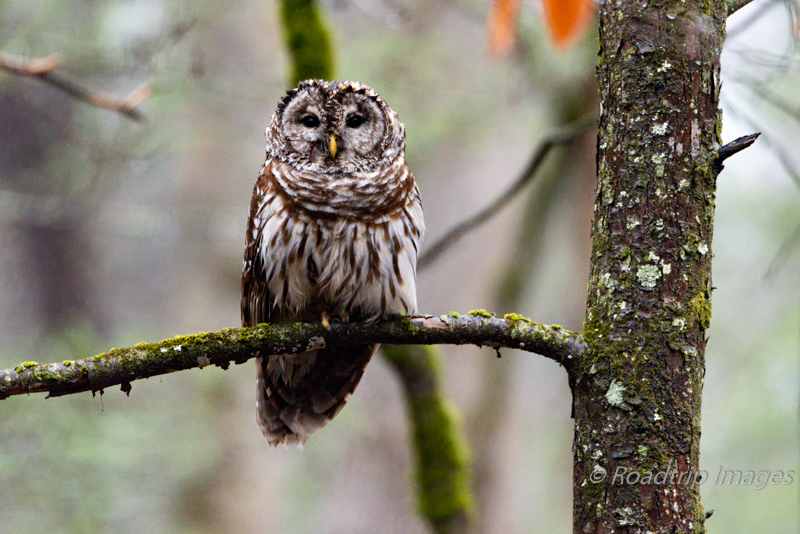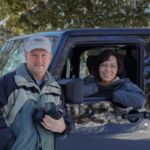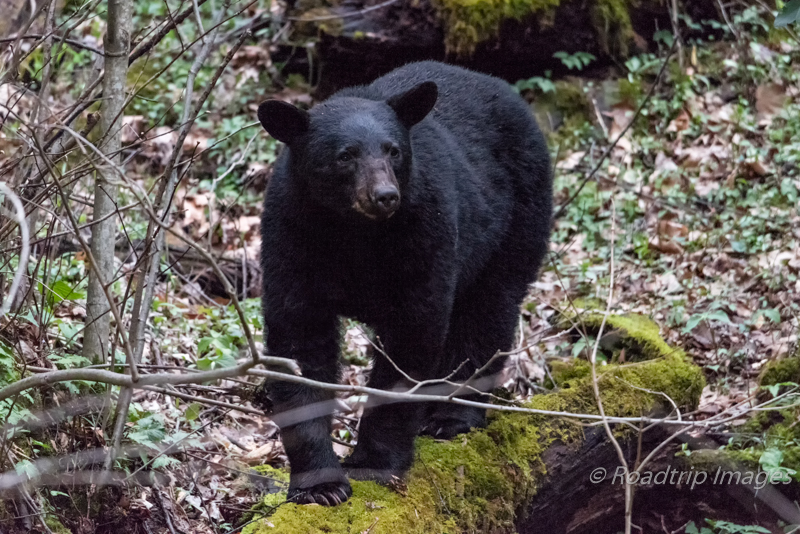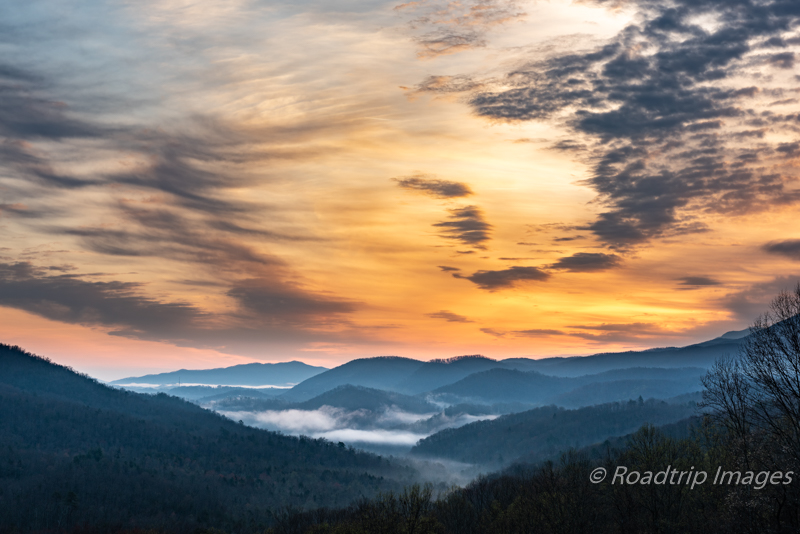Smoky Mountain Owl (And long lenses in low light)
Shooting wildlife in low light is a challenge. Fortunately newer cameras and lenses make it a bit easier…

Long Lenses & Low Light
When shooting wildlife with a long lens (300+mm) you need a fast shutter speed. Especially if you are hand holding the camera. The old rule of thumb was that the shutter speed should be 1/focal length. So, if you’re shooting a 400mm telephoto hand held for example, your shutter speed needs to be at least 1/400th of a second or faster. Anything slower than that would risk camera shake in the image. You just can’t hold the camera and lens still enough to get a sharp photograph. If you have a tripod and a gimbal head you can get away with slower speeds.
To compensate for the fast shutter speeds you need to open the aperture or f-stop up to let enough light in. Many times that means you’re shooting wide open to get enough light. If that’s still not enough light for a proper exposure, there’s only one variable left and that’s ISO or the sensor’s sensitivity to light. The higher the number the more sensitive it is to light. The downside is when the ISO gets cranked up too high it introduces digital noise into the image. There’s always tradeoffs to be made.
For wildlife or action shots in general, you want to set the shutter speed and let the camera select the f-stop and ISO. You do this by placing the camera in shutter priority mode. Pick the shutter speed that will ensure a crisp shot with no camera shake for the focal length telephoto you’re using. I like to go a bit faster then the 1/focal length rule just to be sure. The camera will then automatically select the other two variables to obtain a proper exposure.
Big telephoto lenses can be expensive. Especially big lenses with wide apertures like a 600mm f/4.0 telephoto. I mentioned in the previous post that a new Nikon 600mm f/4.0 telephoto will set you back $13,000! Fortunately there are other options out there if you can live with a little less performance.
Newer Lenses and Camera Sensors
With the advent of image stabilizing lenses, handheld shooting has vastly improved. Using some clever gyros and motors inside the lens, the camera shake caused by hand holding can be canceled out to a large degree. Many of the newer lens configurations boast 3-4 stops of improvement with their image stabilization technology. This means that if it took 1/500th of a second to get a crisp shot before, you could realistically shoot at 1/250th to maybe even 1/125th of a second with the image stabilization turned on. Not sure I’d go all the way to 4 stops but 2-3 stops can be done reliably. This works for normal camera shake only. Large movements will still cause problems.
Assuming you don’t want to spend $13,000 on a new 600mm prime lens, there are a couple newer lenses on the market that warrant some attention. Tamron and Sigma both have come out with a 150-600mm zoom lens that not only has image stabilization but also a realistic price tag. The Tamron G2 lens costs around $1400 new and boasts some very good optical performance if you can live with an f/6.3 max aperture at 600mm. I decided that it was a good set of trade-offs and bought it last year. $1400 is a lot more palatable than $13,000. The image above was shot with this lens at 600mm.
One of the advantages of newer cameras is the remarkable performance of the image sensor in low light. Especially a full frame sensor. ISO’s in the thousands used to be off limits because of the high noise levels they produced. The current generation of sensors can easily operate at these ISO’s and deliver very acceptable image quality. The owl picture above was shot at an ISO of 5000 and is still fairly clean. The noise that is there can be reduced even more in post processing.
So combining these two technologies, image stabilization and better sensors, really makes for better success with wildlife and action photography. And with the lower weight of the newer 150-600mm zooms it’s realistic to hand hold these for better mobility. Hand holding the big 600mm f/4.0 primes for any length of time is just not realistic. They are heavy!
Making the Photograph
Getting this shot of the owl in a tree was really just good fortune. We were driving inside Smoky Mountain National Park on our way to the Roaring Fork Motor Trail when Karen spotted this guy in a tree along the road. Fortunately there wasn’t much traffic and I was able to pull off to the side of the road. I worked quickly to get the 150-600mm zoom attached to the camera and change all the camera settings from the typical landscape mode they’re in. I set it to shutter priority mode and set the speed to 1/800th of a second. I set the ISO to auto rather than fixed. I also set the shutter mode to continuous high speed. White balance was also on auto.
I walked carefully back to where she spotted the owl and looked around to try and find him. It took awhile but there he was, still perched on the branch and watching my every move. I zoomed all the way to 600mm and focused on his eyes letting the image stabilization take hold. I fired off several frames and then moved a little closer. I knew at some point he’d probably get annoyed with me being there and he’d fly off. Fortunately I was able to move close enough to get a full frame view of him on the branch before he took off. I didn’t have to crop the image above very much.
We searched around for awhile to try and find the next tree he flew to but no luck. They just blend in so well in the woods it’s really hard to spot them. That’s why it was such a stroke of luck to spot him so close to the road.
The combination of high ISO, image stabilization and lower weight telephoto’s really made this shot. Being mobile and hand held really allowed me to move around to get the photograph before he flew off. Not sure I could have done it with a tripod.
Final Thoughts
To successfully shoot wildlife images you need a long telephoto. Big glass as they say. Your smartphone just won’t do. Often you’re also shooting in low light conditions like in the woods. Although not quite as high performance as the big 600mm primes, the new generation of 150-600mm zooms are a compelling alternative. They have very good optical performance, image stabilization and they’re light enough to hand hold. That’s a pretty good set of features not to mention you don’t need a mortgage to buy one. Couple this with the high end image sensors in today’s cameras and you have a winning combination.
As always, you can see higher resolution images on our Facebook page. Please give us a like while you’re there.
Nikon D810 with Tamron 150-600mm G2 at 600mm. f/6.3 at 1/800th of a second. ISO 5000.
Subscribe and Get Free E-Book!

Comments are closed.




